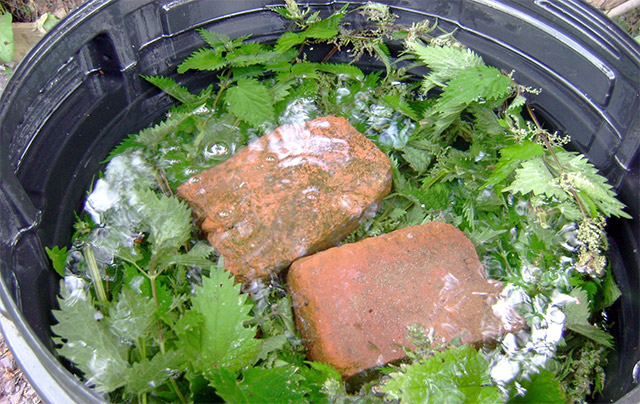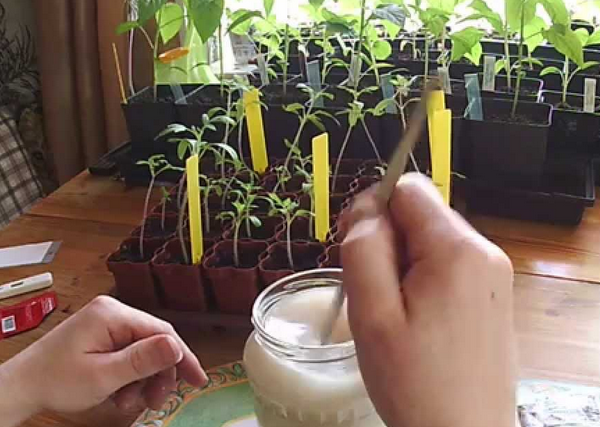Yeast as an effective top dressing for tomato seedlings
Content
Why yeast is good
In addition to the benefits described above, yeast is a good growth promoter and a source of essential bacteria. Yeast feeding helps to activate the growth of the root system: the results of experiments have shown that substances that are released from yeast cells accelerate root growth by 10-12 days and increase them. The active growth of the root system promotes the development of strong and healthy greenery. Plants fed with a solution become strong and hardy. Seedlings fertilized with yeast in early spring tolerate picking better and stretch less. The use of the mass as a foliar top dressing has proven itself well. 
Previously, gardeners used fertilizer mainly for potatoes and tomatoes that grow outdoors. Later it turned out that the sourdough has a positive effect on the seedlings of other garden crops.
Feeding with a solution is suitable at any stage of plant growth, but it is especially effective for seedlings, since during this period it is important to lay nutrients for growth and root development. The leaven promotes abundant fruiting.
The preparation of the starter solution will be a godsend for vegetable growers who want to grow exclusively environmentally friendly products, without adding purchased preparations and mineral supplements. Tomatoes, peppers and cucumbers can be watered with this homemade fertilizer. This maximizes vitamin preservation and saves you money.
Sourdough watering processes the mulch into compost and thus nourishes tomatoes, cucumbers and peppers throughout the summer.
Starter cultures are rich in nitrogen and phosphorus. Their only drawback is the absorption of potassium. But the mixture actively interacts with the soil, improving its structure and composition. Water the tomatoes with wood ash to solve the potassium problem.
Do-it-yourself feeding
Use this recipe: stir 200 g of ordinary baker's yeast in 1 liter of water. Before fertilizing, increase the volume of the mass to 10 liters. You can try to put 100 g of "raw" basic fertilizers in 10 liters of warm water, leave for a day. Also use this recipe: mix 10 g of dry yeast and 2 tbsp. l. sugar with 10 liters of warm water and leave for 2-3 hours. For replenishment, this infusion is used in a ratio of 1: 5.
If you have a lot of seedlings, you can use the following recommendations: in a 70-liter barrel with mixed dry grass (1 bucket) add the remains of dried bread (0.5 kg) and half a kilogram of our fertilizer. Insist 1-2 days and use. Here is a recipe for feeding a tomato: 1 tbsp. l. not a crude substance must be mixed with 2 tbsp. l. sugar, a handful of earth and 2 g of ascorbic acid. Let the mixture sit in 5 liters of water throughout the day. Feed in the following ratio: for 10 liters of water - 1 liter of infusion.
If you use a friable substance, then you need to dilute it in a glass of warm water and leave for 2 hours, and then pour it into a 10-liter bucket of water. You will see improvements in 2-3 days - the leaves will become glossy and shiny.
Nettle, as a natural nutrient, for the production of infusion received positive feedback from practicing vegetable growers.The herb can be used as mulch after fertilization. Insisting it for 2-3 days in sourdough, you get a lot of trace elements useful for tomatoes.
 After talking with experienced vegetable growers, you can hear reviews about the use of components. For example, not all gardeners use sugar, but someone is a follower of the simplest recommendations. Black rye bread can be added to the sourdough as the main fertilizer.
After talking with experienced vegetable growers, you can hear reviews about the use of components. For example, not all gardeners use sugar, but someone is a follower of the simplest recommendations. Black rye bread can be added to the sourdough as the main fertilizer.
The traditional recipe is as follows: take 1 kg of starter material (not in granules, but in briquettes - they are cheaper) and 5 liters of water. The liquid is brought to a temperature of 35 degrees to enable microorganisms to become active. Withstand this solution for a day, then dilute it with half a liter in a ten-liter container with warm water. Ten buckets are enough to water 20 tomato or pepper bushes.
The above recommendations can be applied to all nightshade crops.
How to fertilize correctly
Top dressing should be done 2 times per season. Tomatoes can be fertilized more often by reducing the concentration of the mixture, for example, 4 times, but do not overuse. Tomatoes can be fertilized one month after planting in the ground and in the middle of summer.
Use prepared solutions only after warming up the earth. Top dressing should be done in summer or late autumn. Previously, it is impractical to fertilize tomatoes with the above methods, because the bacteria contained in the solution will not act in cold weather.
Before fertilizing, check the condition of the soil: it should be warm and moist, but not wet or dry. This environment will be most favorable for the activity of bacteria in solution. The weather is preferably sunny. Spread out the warm solution so that each plant receives half a liter.
It is most effective to feed the seedlings with yeast in the evening, since during the day the sun will warm up the earth sufficiently. Use only fresh ingredients to prepare the mixture. It also doesn't have to be old. The solution is suitable for plants after planting in a greenhouse. There are a lot of positive reviews about him on the Internet. Fertilize for the first time when buds are forming or flowering begins. If there was a planting from a greenhouse to a permanent place, then fertilizer must be applied after 20 days.
In the garden and in the greenhouse, combine the solution with ash. This element will not provide adequate fertilization, but will be an addition to the starter culture. When the growth of nightshades is inhibited or thin stems form on them, the ash will save the plants from these problems.
Video "Fertilizing tomatoes with yeast"
In this video, you will see whether it is worth fertilizing tomatoes with yeast and what you need to do to get a rich, generous harvest.

